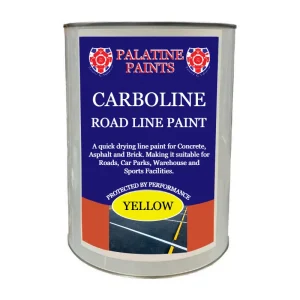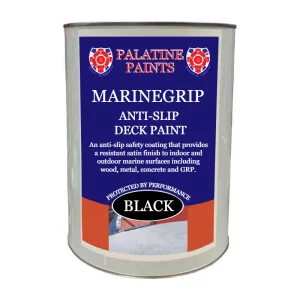All Blogs, Industrial & Commercial, Priming and Protecting, Weatherproofing
Why Using Palatine Damp Proof Membrane (DPM) Paint Is Essential
Damp Proof Membrane (DPM) paint is a crucial component in any construction project, as it plays a significant role in protecting the structure from water damage. This article will explore the importance of using a damp proof membrane paint, specifically focusing on the Palatine Damp Proof Membrane. We will discuss the benefits of using this product, how it works, and the various applications where it is most effective. By the end of this article, you will understand why using a damp proof membrane paint is essential for the longevity and integrity of your building project.
Understanding Dampness and Its Effects
Before we dive into the specifics of Palatine Damp Proof Membrane paint, it is essential to understand dampness and its effects on a building. Dampness can be classified into two main types: rising dampness and condensation.
Rising Damp
Rising dampness is a form of dampness caused by water being absorbed from the ground and travelling up through the walls and floors of a building. This can lead to a range of issues, including damage to the structural elements, deterioration of the building materials, and the development of mould and mildew.
Condensation
Condensation, on the other hand, is caused by moisture in the air. When warm air comes into contact with a cold surface, such as a window or an external wall, the moisture in the air condenses and forms droplets of water. This can lead to damp patches on walls and ceilings, as well as mould and mildew growth.
The Importance of a Damp Proof Membrane (DPM)
Now that we have a basic understanding of the types of dampness and their effects on a building let’s discuss why a damp proof membrane is essential.
Protecting Structural Integrity
One of the primary reasons for using a damp proof membrane, such as Palatine Damp Proof Membrane paint, is to protect the structural integrity of the building. Water damage can lead to weakened materials, such as wood and concrete, which can compromise the strength of the structure.
Preventing Mould and Mildew Growth
Mould and mildew can have adverse effects on both the building and its occupants. Not only can mould cause damage to materials and surfaces, but it can also lead to health issues for those living or working in the building. A damp proof membrane can help prevent mould and mildew growth by blocking moisture from entering the structure.
Preserving Aesthetics and Functionality
Water damage can lead to unsightly stains, peeling paint, and warped materials. By using a damp proof membrane, you can help preserve the aesthetics and functionality of your building, ensuring that it remains an attractive and comfortable space for occupants.
Introducing Palatine Damp Proof Membrane Paint (DPM)
Palatine Damp Proof Membrane paint is a high-quality, water-based product designed to provide a barrier against dampness. It is easy to apply, dries quickly, and offers long-lasting protection against water damage. This section will discuss the advantages of using Palatine Damp Proof Membrane paint, as well as its key features and benefits.
Advantages of Palatine Damp Proof Membrane Paint (DPM)
There are several advantages to using Palatine Damp Proof Membrane paint, including:
- Ease of Application: Can be easily applied with a brush, roller, or spray equipment, making it a versatile and user-friendly option for both DIY enthusiasts and professional contractors.
- Quick Drying Time: The paint dries quickly, allowing you to move on to the next stage of your project without unnecessary delays.
- Long-Lasting Protection: Once applied, our damp proof membrane paint forms a durable barrier that can protect against dampness for an extended period.
- Compatible with Various Surfaces: The paint can be applied to a range of surfaces, including concrete, brick, plaster, and more, offering a versatile solution for different construction projects.
Key Features and Benefits
Some of the key features and benefits of Palatine Damp Proof Membrane (DPM paint) include:
- Water-Based Formula: The water-based formula is environmentally friendly and has low odour, making it suitable for use in occupied spaces.
- Breathable: The paint is breathable, allowing moisture to escape from the substrate while preventing water ingress.
- Adhesion: boasts excellent adhesion, ensuring a strong bond with the substrate.
- Coverage: The paint offers good coverage, providing a cost-effective solution for damp proofing projects.
Applications for Palatine Damp Proof Membrane Paint
The paint can be used in a variety of applications to seal damp and seal wet concrete. Some of the most common applications include:
Basements and Cellars
Basements and cellars are prone to dampness due to their proximity to the ground and the potential for groundwater ingress. Applying the paint to the walls and floors of these spaces can help prevent water damage and create a dry, usable space.
Bathrooms and Wet Rooms
Areas exposed to high levels of moisture, such as bathrooms and wet rooms, can benefit from the application of Palatine Damp Proof Membrane paint (DPM). The paint can help prevent water ingress and protect surfaces from mould and mildew growth.
External Walls
The paint can also be applied to external walls to provide a barrier against rainwater and other sources of moisture. This can help protect the structure and preserve the appearance of the building.
How to Apply
To get the best results it is essential to follow the correct application process. This section will outline the steps involved in applying the paint to your chosen surface.
Step 1: Surface Preparation
Before applying the paint, ensure the surface is clean, dry, and free from any loose material or contaminants. Any existing mould or mildew should be treated with a suitable fungicidal wash and allowed to dry.
Step 2: Priming (if required)
Depending on the substrate, a primer may be necessary to ensure proper adhesion of the paint. Consult the manufacturer’s guidelines for specific primer recommendations.
Step 3: Application
Apply using a brush, roller, or spray equipment, following the manufacturer’s guidelines for coverage rates and drying times. Two coats are typically recommended for optimal performance.
Step 4: Finishing
Once the paint has dried, you can apply your chosen decorative finish, such as paint or wallpaper.
Conclusion
In conclusion, using a damp proof membrane paint like Palatine Damp Proof Membrane is essential for protecting your building from the damaging effects of dampness. By understanding the types of dampness and their effects, as well as the benefits and applications, you can ensure that your construction project is built to withstand the challenges of moisture and stand the test of time.
Contacting us is easy!
Email: [email protected]
Call Us: 01942 884 122
Contact form: https://www.palatinepaints.co.uk/contact-us
Live Chat Service: Press the small blue icon at the bottom left of your screen.


